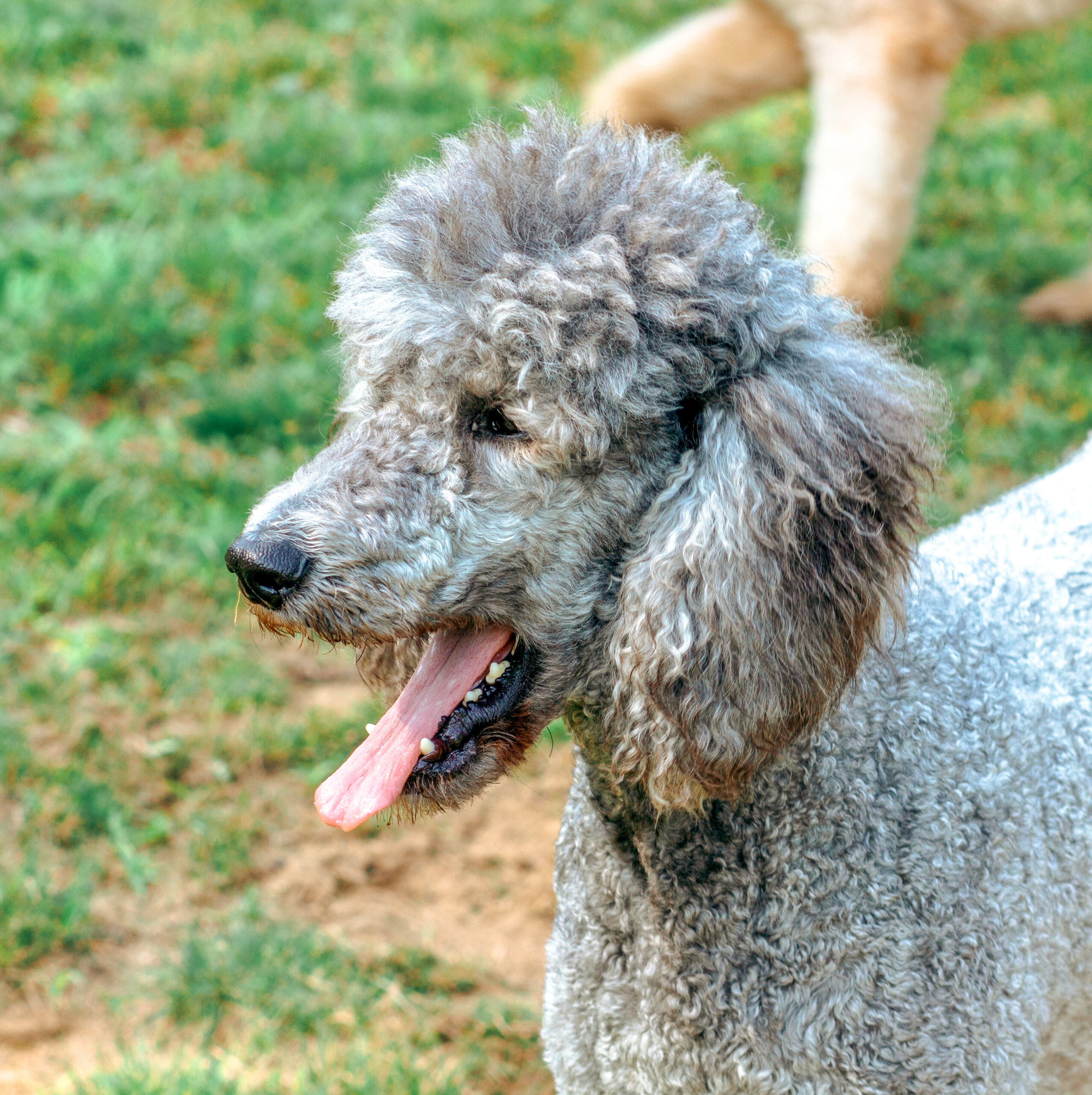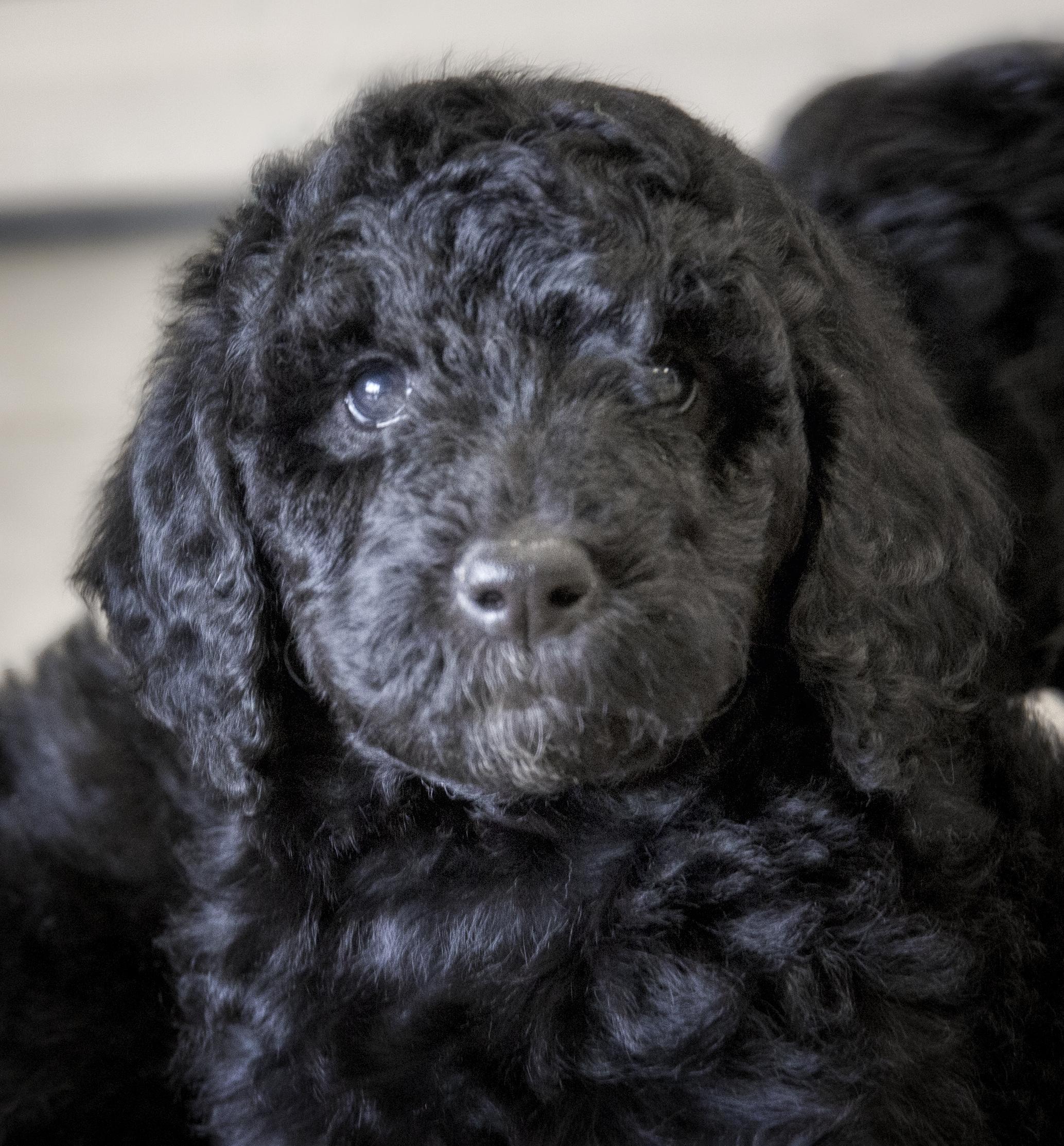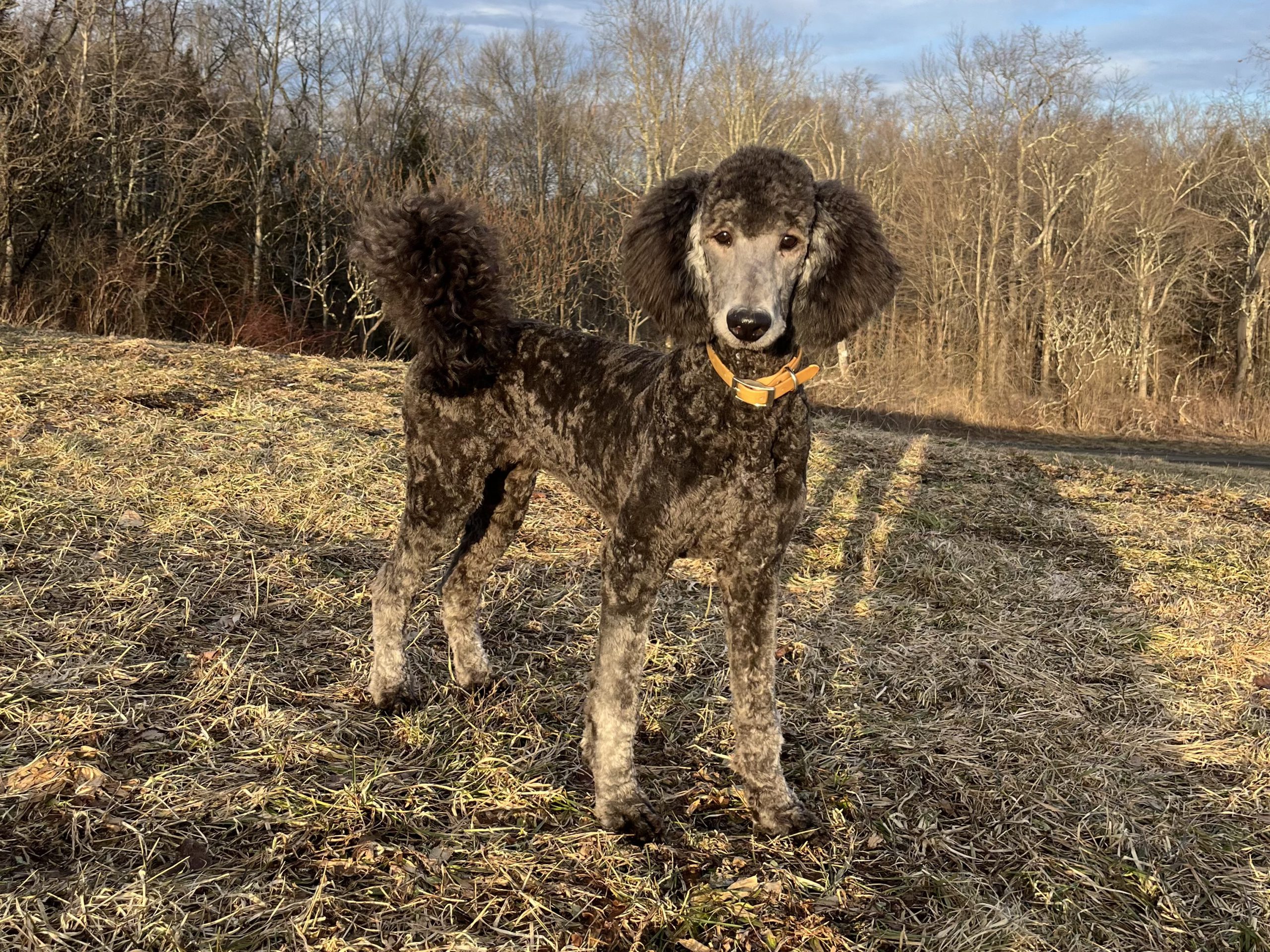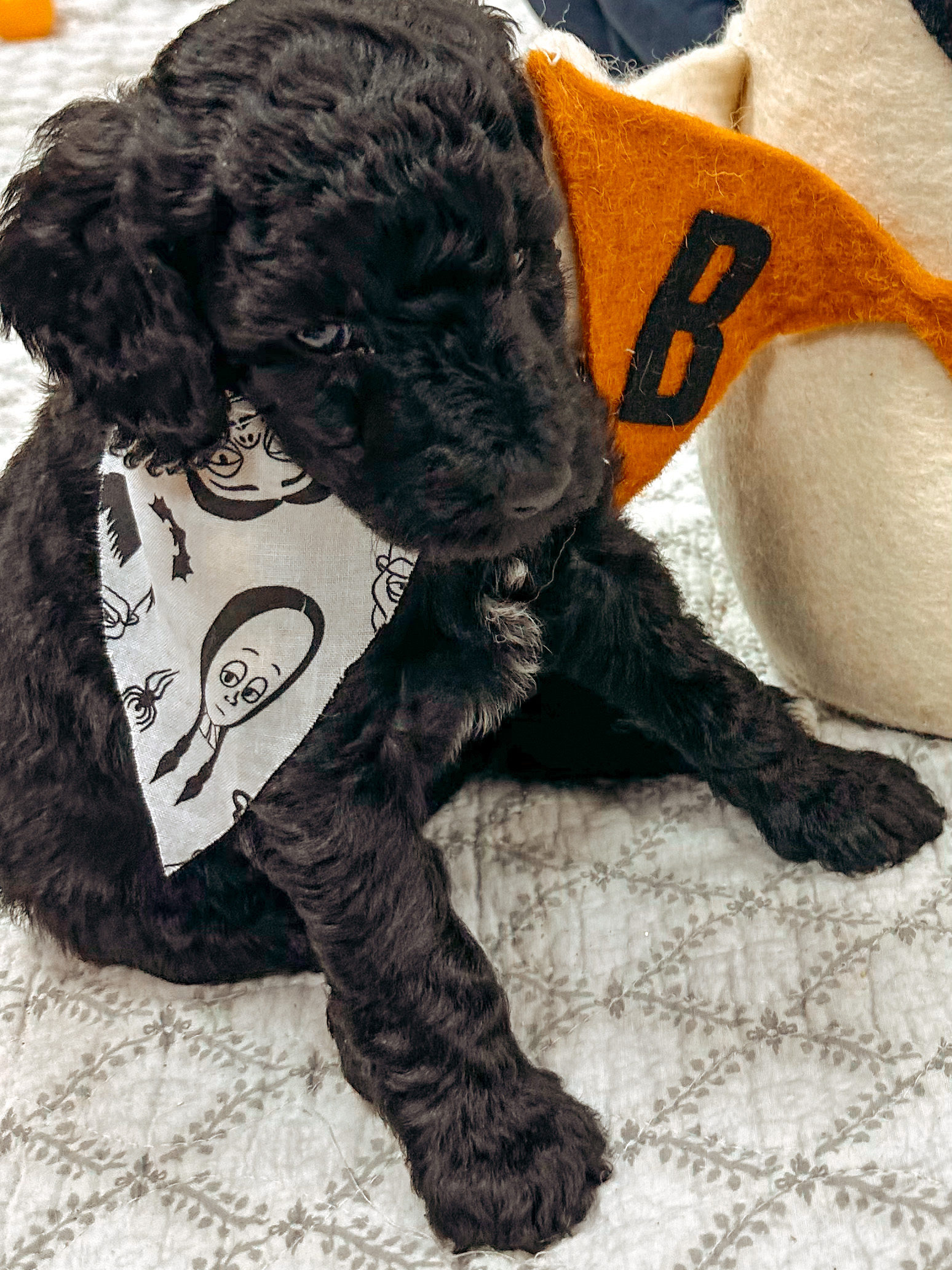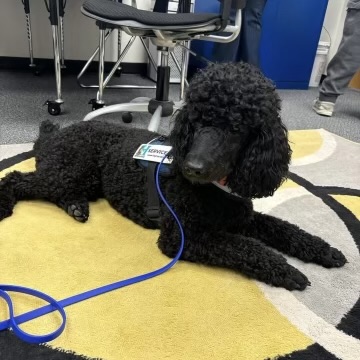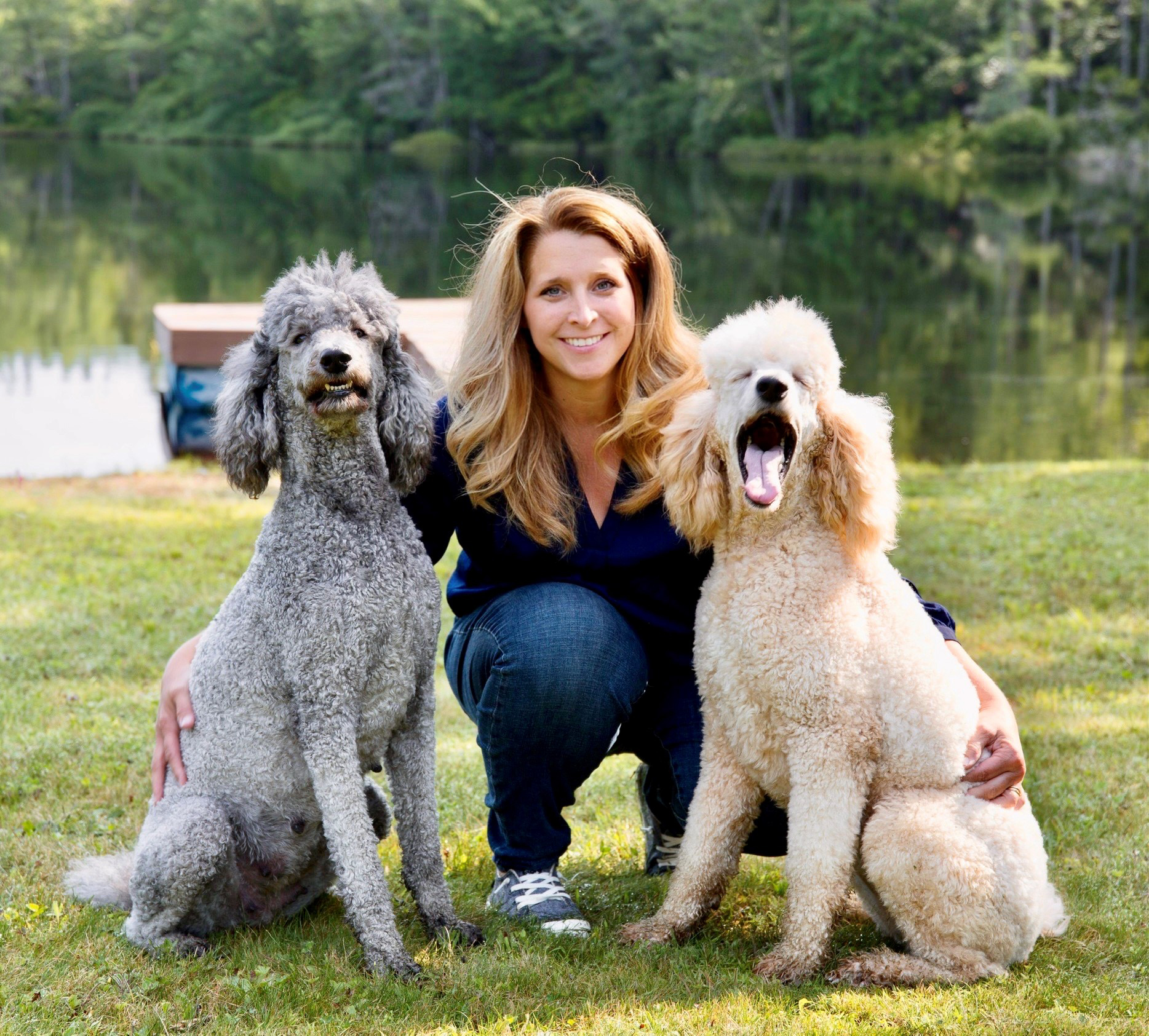One of the fascinating things about Poodles is how their coat color can evolve over time. Many owners love watching their rich black puppy slowly transform into a stunning silver or soft blue adult. But why does this change happen—and can breeders predict it?
The answer lies in a genetic trait called progressive graying. While we know it exists, the exact genetic marker hasn’t been discovered yet. That means there’s currently no DNA test to predict with 100% certainty how a Poodle puppy’s color will mature.
Some shifts are easier to spot early. Silver Poodles, for example, are born black but begin to lighten at just 6–8 weeks old. Breeders often shave a patch on the face to see if the skin underneath looks silvery. These pups are typically fully silver by their first birthday.
Blue Poodles fade more gradually. The change usually starts around 11–12 weeks, often with a brownish tint to the face or a little brown “mustache.” Over time, their coat softens into a blue-gray shade, with full transformation usually complete by age 3.
There’s also a helpful breeder trick: if a black puppy has black paw pads and white hairs growing between the toes, they may eventually turn blue. (This trick only works if the paw pads are black—not pink or white.)
While we wait for genetic testing to catch up, these little clues—and years of experience—help breeders guide puppy buyers and appreciate the beautiful variety within the breed.
Daphne when she was around 7 weeks. You can see how she was quite black, but there were a few silver hairs around her face.
Daphne at nearly a year old. You can see her coat is still darker, but she her face is very silver. This is the middle of the transition to full silver.
Daphne at about 2.5 years old. You can see her coat is nearly all silver now, just a few streaks of dark here and there.
Here is a black puppy, and you can see what he looks like 18 months later, he’s a true black.

